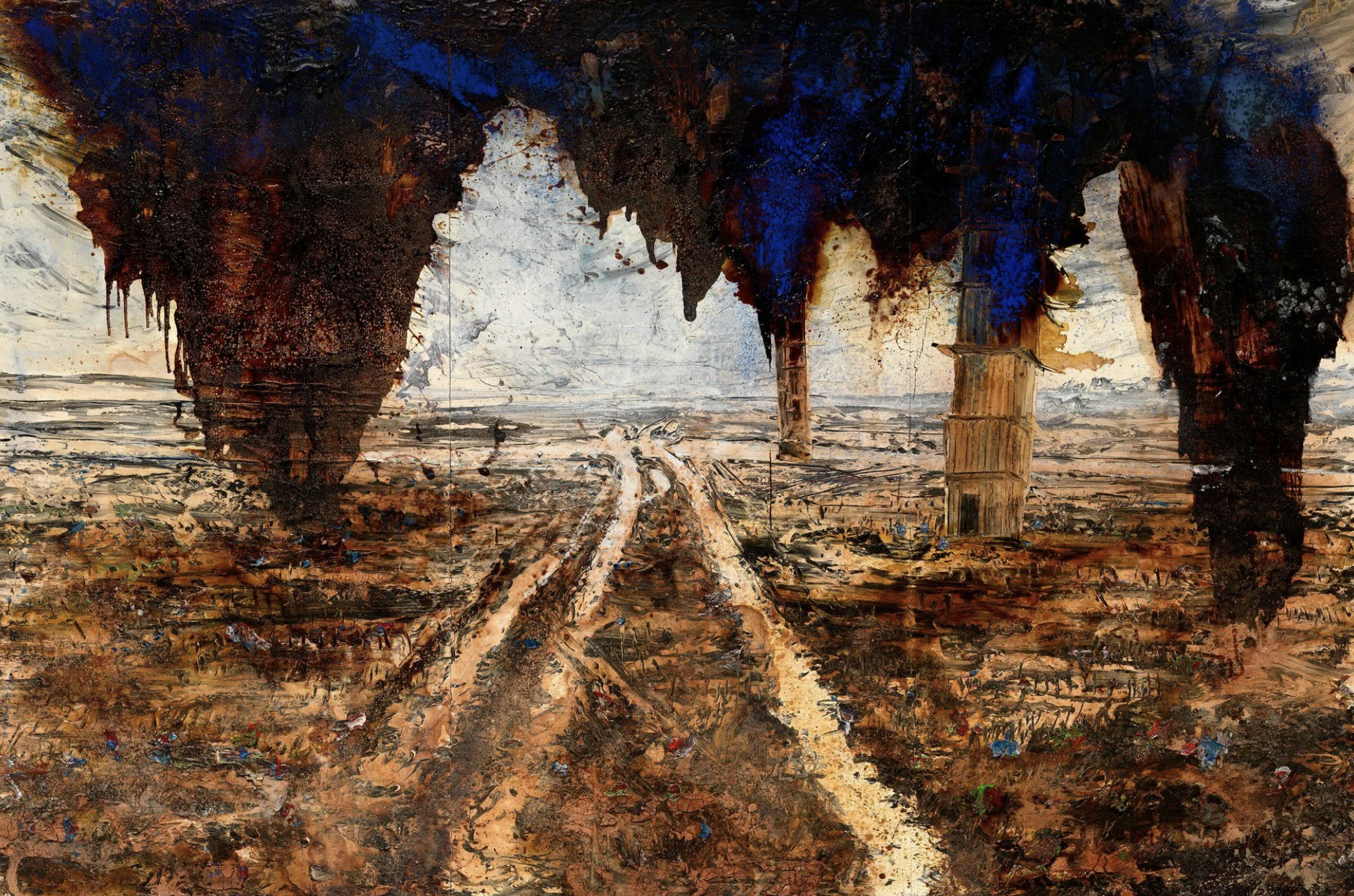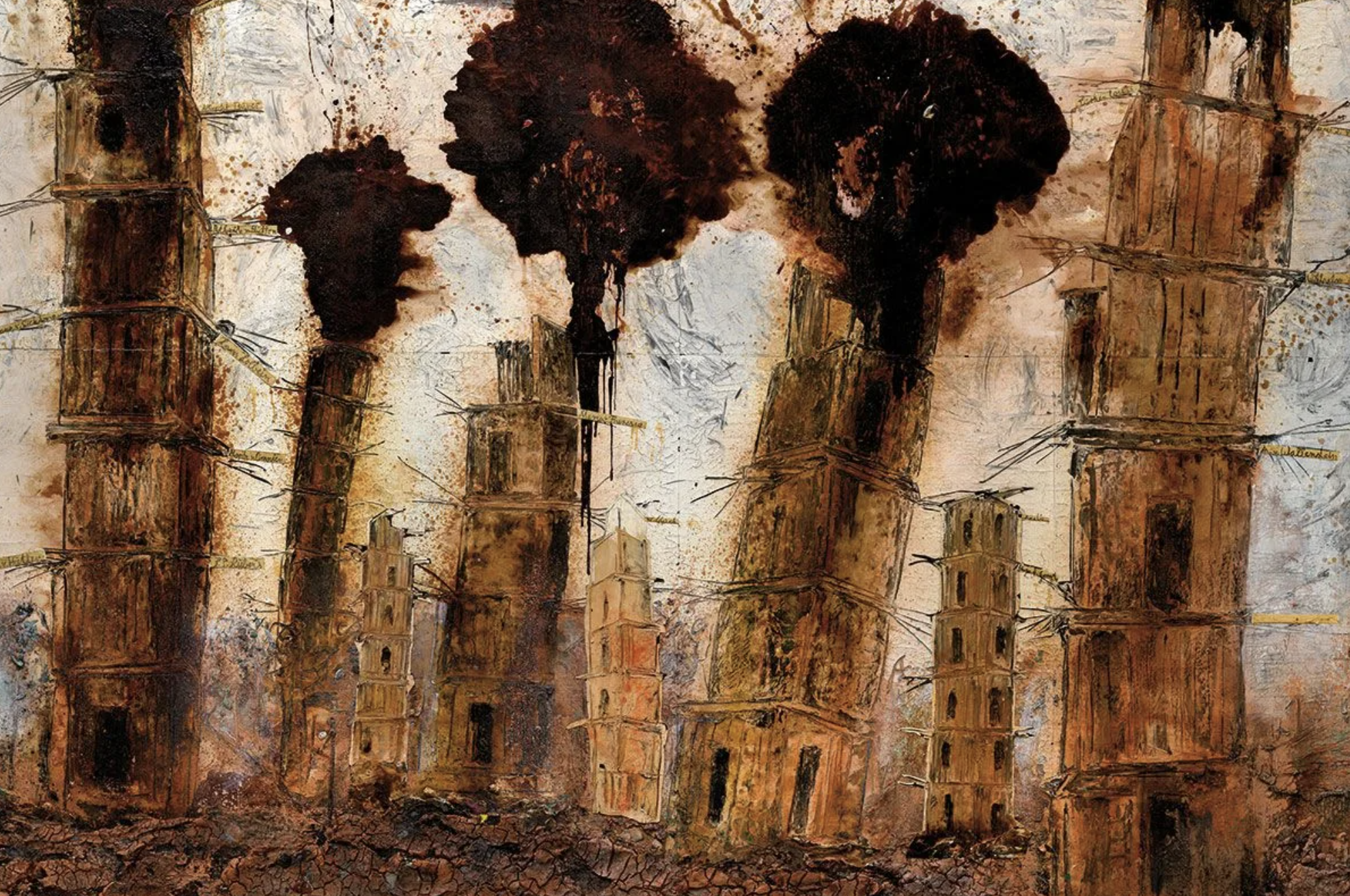Anselm Kiefer: Embracing History and Mythology Through Artistic Alchemy

Anselm Kiefer is a contemporary German artist whose work explores themes of history, mythology, memory, and identity with an intensity that is both poetic and provocative. Born in 1945, in the final months of World War II, Kiefer's oeuvre is heavily influenced by the cultural, political, and spiritual landscape of post-war Germany. His art grapples with the legacy of the Third Reich and seeks to confront the silence that many of his compatriots preferred in the aftermath of the Holocaust and the war.

Kiefer's childhood experiences amidst the ruins of a defeated nation had a profound effect on his artistic vision. He studied law and Romance languages before deciding to pursue art, receiving his instruction in the arts at the schools of Freiburg, Karlsruhe, and Düsseldorf. It was under the tutelage of influential conceptual artist Joseph Beuys that Kiefer began to truly develop his characteristic style.

Employing a wide range of materials and techniques, Kiefer's work is as much about the process as it is about the final product. His paintings, sculptures, and installations often incorporate lead, straw, ash, clay, shellac, and other organic materials, creating textured, layered works that evoke the process of decay and transformation. This choice of materials serves a dual purpose, acting as a metaphor for the persistence of memory and the possibility of renewal and redemption.

One of Kiefer's notable approaches is his use of large canvases. His paintings are often enormous, engulfing the viewer and creating an immersive experience that commands reflection. The scale relates directly to the grand themes he tackles: the vastness of history, the enormity of human folly, and the boundless capacity for renewal.

His motifs often draw from various mythologies and cosmologies, from the Jewish Kabbalah to Norse legends. In works like "Osiris and Isis" and "The Secret Life of Plants," Kiefer delves into ancient stories and symbols, recontextualizing them in modern times and in the shadow of Germany's troubled past. By weaving these mythical elements with historical events, he suggests a cyclical nature of destruction and creation, a universal narrative that resonates with contemporary audiences.

Kiefer's art is not without its critics. His willingness to confront Nazism through his art, sometimes deploying symbols associated with the Third Reich, has stirred controversy. Yet Kiefer insists that his aim is not to glorify but to remind, not to reproduce the symbols but to repurpose them in the service of remembrance and critical engagement.
Since his first solo exhibition in 1969, Kiefer has achieved international recognition. His works are included in major museums around the world, such as The Museum of Modern Art in New York, the Centre Pompidou in Paris, and the Tate Modern in London. Kiefer has also been recognized with numerous awards, including the Praemium Imperiale in 1999, which is one of the highest honors in the field of art and culture.

As Kiefer’s career advanced into the 21st century, his subject matter expanded to cover environmental issues and broader humanistic concerns, keeping his work relevant and dynamic. Despite the shift in themes, the core of his approach remains: a fascination with the past and its continuing impact on the present.

In conclusion, Anselm Kiefer is an artist who relentlessly challenges viewers to confront the weight of history, the powers of mythology, and the capacities for human regeneration. His works are as complex and layered as the materials he uses, offering no easy answers but demanding engagement and reflection. Kiefer's art is a testament to the belief that understanding our past, in all its darkness and light, is essential to navigating the currents of our contemporary world.